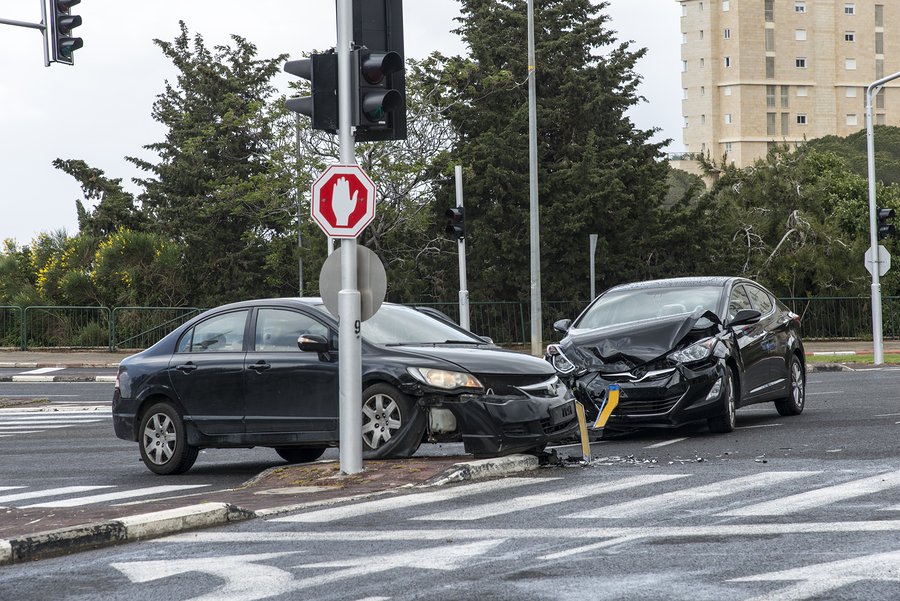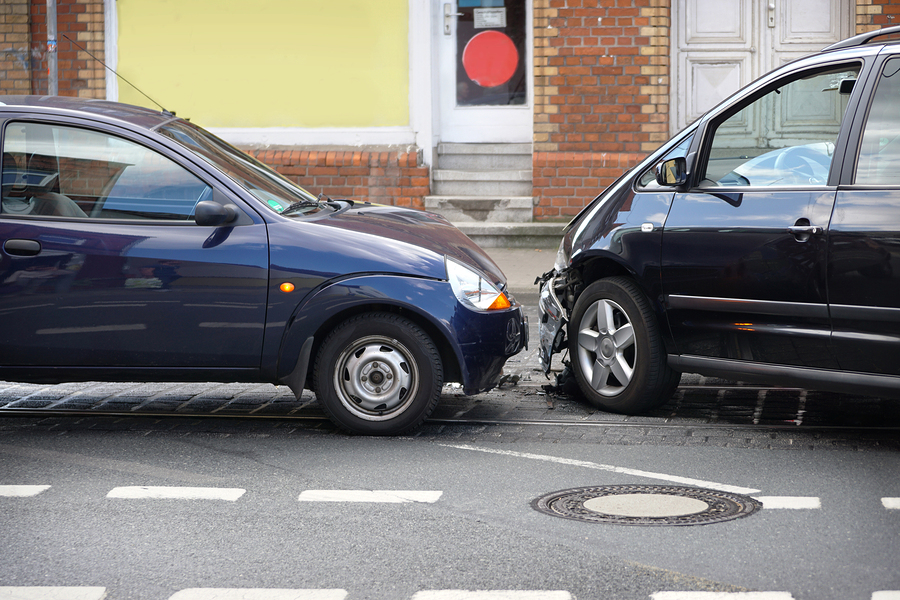Driver distractions existed long before the advent of personal electronic devices. However, the development of technology has only enhanced the problem. Recently, smartwatches have become the latest digital device destined to become a dangerous distraction for drivers. While smartwatches may not divert a driver’s attention to the same degree as a smartphone, nonetheless, they increase the chances that a driver may become distracted behind the wheel.
Some smartwatch functions are interactive, which increases the opportunity for drivers to become distracted and cause an accident. As with other personal electronic devices, it will take a while for law enforcement authorities to recognize when a driver is distracted by a smartwatch. Officers will require investigative experience and training to determine when smartwatch-use contributed to an accident.
What Does a Smartwatch Do?
Smartwatches are watches that sync with your other electronic devices. They are part of a growing market of digital devices that provide consumers with the hands-free operation of multiple devices. The user straps a smartwatch to their wrist like a traditional wristwatch. However, the smartwatch provides features that traditional watches do not. Like smartphones and tablets, smartwatches are equipped with a touch screen that the wearer uses to access apps and data.
Smartwatches are marketed to consumers as a user-friendly device enabling hands free use of other devices. The nature of the design encourages multitasking while driving or performing other activities. Depending on the smartwatch you choose, the available functions will vary. Wearers may track their fitness and health, answer voicemail messages, play music, receive reminders, control smart home features, and access GPS functions. Some smartwatches pair with smartphones via Bluetooth to enhance their functionality. Newer models have SIM card capability that allows them to operate as a phone.
All smartwatches have the potential to induce distracted driving behaviors. The National Safety Council identifies driver distractions as anything that diverts a driver’seyes from the road, hands from the wheel, or mind away from driving.
Distracted Driving and Digital Devices
The National Highway Transportation Safety Administration (“NHTSA”) defines distracted driving as, “...the inattention that occurs when drivers divert their attention away from the driving task to focus on another activity...” This occurs when an internal or external distraction affects a driver’s performance either visually, manually or cognitively. Because of the number of texting-related accidents, law enforcement authorities often use the terms distracted driving and texting while driving interchangeably.
Statistics reported by the NHTSA reveal that, across the nation, 2,841 people lost their lives in distracted driving accidents during 2018. The fatalities account for drivers, passengers, bicyclists, and pedestrians.
Distracted Driving Accidents in Virginia
The Virginia Department of Motor Vehicles also tracks statewide distracted driving crashes. As with NHTSA’s national statistics, they have not yet documented any accidents specifically related to smartwatch use.
Virginia’s annual Crash Facts report lists 24,350 distracted driver-involved crashes with these additional details:
- Fatalities in 126 accidents.
- Injuries sustained in 13,733 accidents.
- Distracted driving in combination with speeding caused 41 fatalities.
- Distracted driving in combination with alcohol consumption caused 34 fatalities.
- Property damage only crashes accounted for 15,608 accidents.
- Top distractions included eyes away from the road, observing a roadside incident, and texting or using a cellphone.
Law Enforcement Authorities Don’t Document Smartwatch-Related Crashes
Law enforcement and safety agencies have not yet included smartwatches in national or statewide distracted driving statistics. However, that does not confirm that they have not contributed to any accidents. Just as they did with smartphones, accident investigators must develop the criteria to identify and document smartwatch-distracted driving crashes.
To become more effective in prosecuting smartphone-related cases, law enforcement officials across the country are updating their investigative procedures and training. The NHTSA’s report “Investigation and Prosecution of Distracted Driving Cases,“ explains how authorities found new ways to detect electronic device use before the distraction caused an accident.
Authorities analyze:
- Near miss accidents
- Failure to maintain lane control
- Slow response to signals
- Inconsistent speed
- Intermittent looking up and down
- Nighttime glow in the car
- Holding their hand to their ear
The NHTSA also created post-crash investigative standards to confirm distracted driving as an accident factor. Standards include:
- Negative sobriety test: A distracted driver often operates their vehicle in ways similar to a drunk driver. Officers often suspect distracted driving when a driver passes a field sobriety test or tests negative for alcohol or substance abuse.
- Consent to search: After obtaining permission to look at a driver’s phone at the scene, investigators often gather digital evidence of device use.
- Electronic data: Data obtained by a cell service provider can sometimes provide a record of internet use or texting while driving.
- Recipient evidence: People who received a driver’s electronic communication before an accident sometimes become witnesses.
While some of these before and after crash standards apply to all digital devices, officers must develop additional investigative models to determine smartwatch and other wearables use.
Digital Distraction Isn’t Just About Texting
The National Highway Transportation Safety Administration report on distracted driving investigations discusses how drivers are often distracted by multiple factors. Texting and phone use is the most commonly reported digital distraction leading to accidents. To send a text, a driver must hold a phone, look at the screen, consider the message, and type in a response. Texting involves visual, cognitive, and manual distractions. In some situations, smartwatches require a similar commitment.
Laptops, streaming devices, entertainment systems, GPS systems, and other electronic devices also divert drivers’ attention away from driving tasks. Whether handheld or handsfree, all wearable devices are categorized as personal electronic devices by the National Transportation Safety Board. The Board suggests banning the use of personal electronic devices across all modes of transportation. The NTSB and other safety agencies and organizations acknowledge that hands-free doesn’t mean risk-free.
Virginia’s New Law Doesn’t Address Smartwatches or Other Wearables
The Virginia legislature recently passed House Bill 874, banning the use of digital devices while driving. The new law is set to go into effect on January 1, 2021. The bill replaces the state’s existing ban on texting while driving, which still allowed drivers to make phone calls. The new Virginia law more broadly bans the use of handheld “personal communications devices” with only a few emergency exceptions.
Smartwatches and other wearables were clearly not a consideration for the policymakers who drafted the bill. Users are not required to hold smartwatches in their hands to use them. A user straps a smartwatch to their wrists and may place wireless headphones in their ears to enable the device to function as a cell phone. Wearables aren’t handheld so the change in the law does not restrict their use. As technology continues to develop, other distracting devices will make their way to the market. Until authorities begin tracking smartwatch and wearables-related distracted driving crashes, the laws won’t likely change to include them.
Although House Bill 874 is silent on smartwatches and other wearables, it’s still a critical step forward. Pew Research Center determined that only 21 percent of Americans own smartwatches (this figure includes wearable fitness trackers) while 96 percent own mobile phones. The new law has the power to restrict many Virginia drivers from engaging in dangerous distracted behaviors.
Distracted Drivers are Legally Responsible for Their Actions
Whether or not there is a specific law restricting a driver’s smartwatch use, drivers are still responsible for their actions. When a driver speeds, fails to maintain their lane, or simply drives negligently, they are legally liable for any resulting damages. Distracted driving may result in criminal proceedings against the driver. As long as the evidence proves that the driver caused an accident, you won’t necessarily have to prove that the driver was distracted.
Contact an Attorney When a Distracted Driver Injures You

If a distracted driver injured you or a loved one, you should consult with a personal injury attorney to learn more about your legal rights. Vehicle accidents are often complicated and legally complex.
If you’re dealing with an insurance company, it can be difficult to recognize whether they are treating you fairly. Experienced personal injury attorneys regularly fight for the rights of injured victims to seek the compensation they are entitled to.
When you schedule a free consultation, you are under no obligation to retain the firm’s representation.
Consult an attorney today to understand your legal options.
Emroch & Kilduff, PLLC
Address: 7301 Forest Avenue,Richmond, Suite 300 VA 23226
Phone: (804) 358-1568


